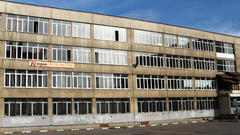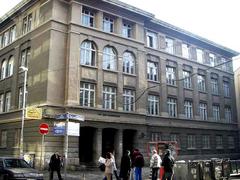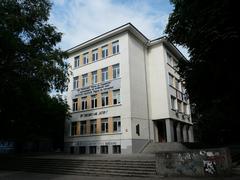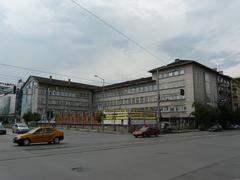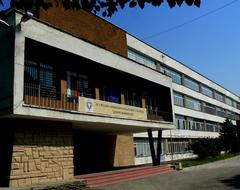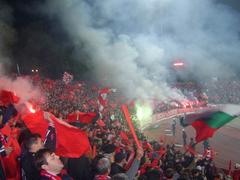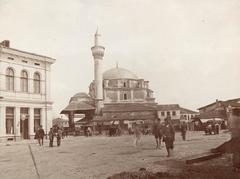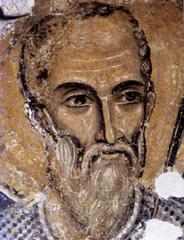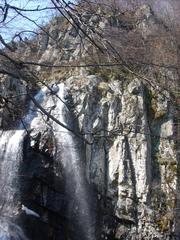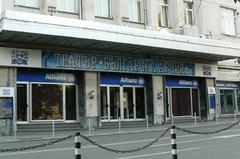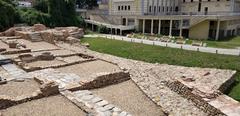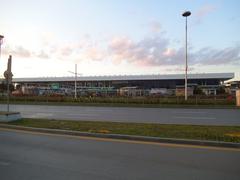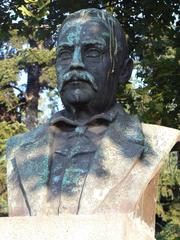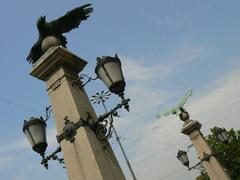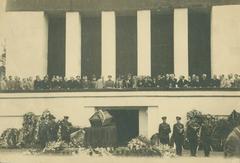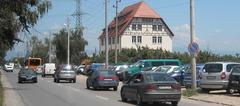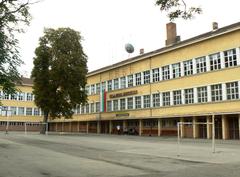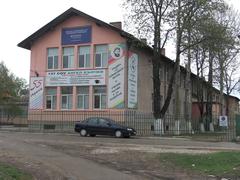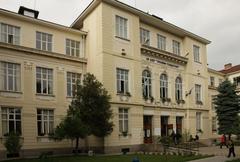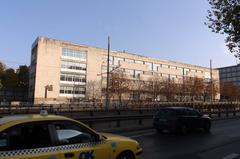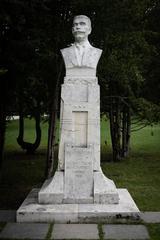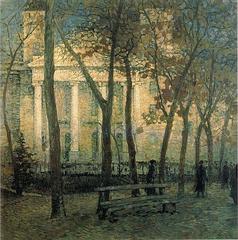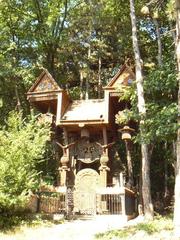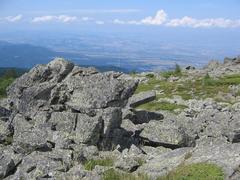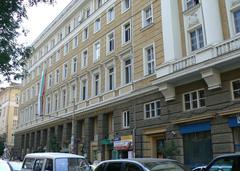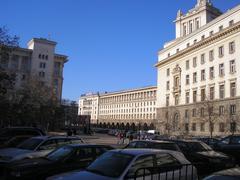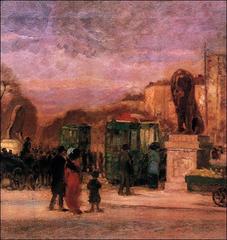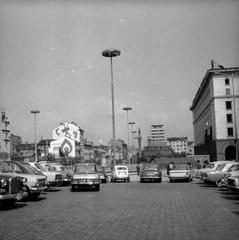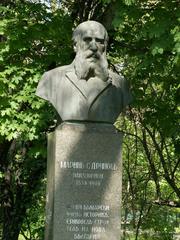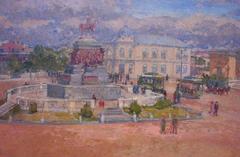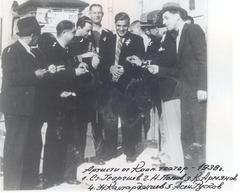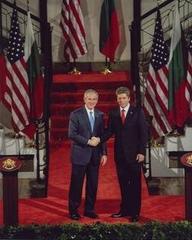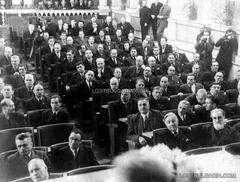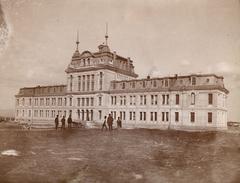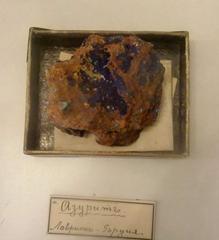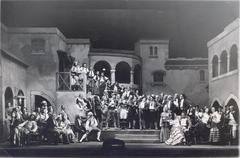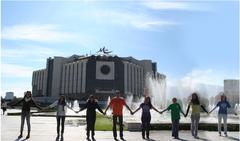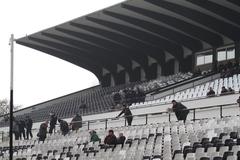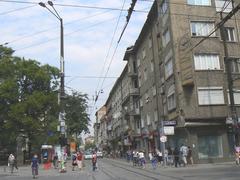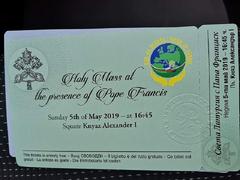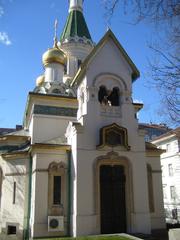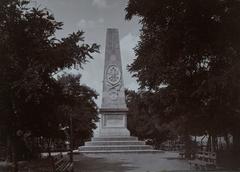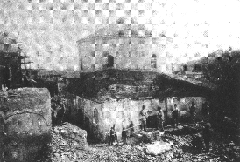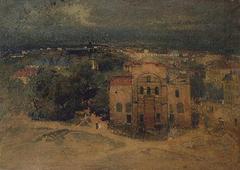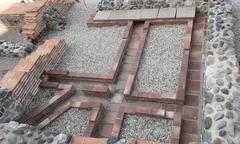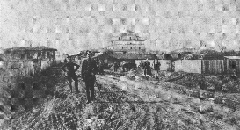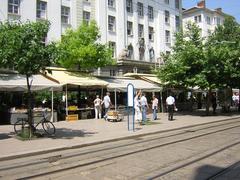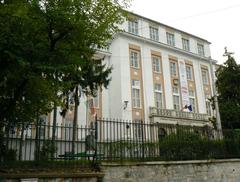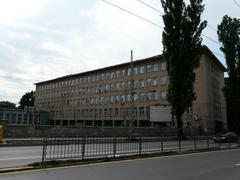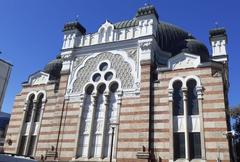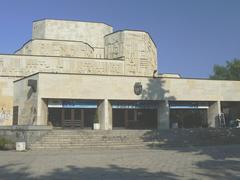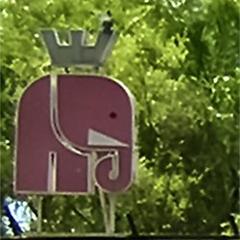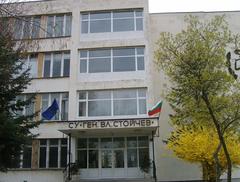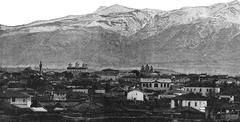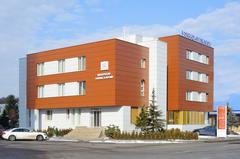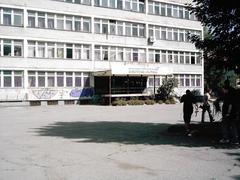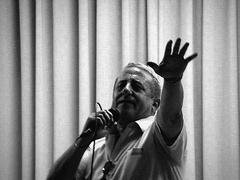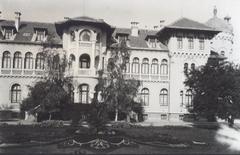Visiting NDK Fountains in Sofia: A Complete Guide
Date: 01/08/2024
Introduction
The NDK Fountains, located at the National Palace of Culture (NDK) in Sofia, Bulgaria, are a captivating blend of architecture, art, and history. Opened in 1981 to commemorate Bulgaria’s 1300th anniversary, the NDK stands as a monumental complex designed in Modernist and Brutalist styles. It is one of the largest multifunctional conference and cultural centers globally, playing host to a plethora of national and international events (NDK History). The complex features two striking fountains: a traditional ground-level fountain and a unique underground water feature at the metro level. These fountains are not just decorative but integral to the NDK’s design, offering visitors a serene and engaging experience (Wikipedia). Visitors can enjoy the fountains year-round, with the best time being during spring and summer when the surrounding gardens are in full bloom and the fountains are illuminated at night (Nomadic Matt). The NDK is easily accessible via public transportation, making it a convenient spot for both locals and tourists. The area around the NDK is bustling with amenities, including cafes, restaurants, shops, and even casinos, ensuring a comprehensive and enjoyable visit.
Table of Contents
- [Exploring the NDK Fountains in Sofia, Bulgaria: History, Tickets, and Visitor Tips](#exploring-the-ndk-fountains-in-sofia-bulgaria-history-tickets-and-visitor-tipsexploring-the-ndk-fountains-in-sofia-bulgaria-history-tickets-and-visitor-tips)
- [The National Palace of Culture (NDK)](#the-national-palace-of-culture-ndkthe-national-palace-of-culture-ndk)
- [Architectural Design and Construction](#architectural-design-and-constructionarchitectural-design-and-construction)
- [The Fountains of NDK](#the-fountains-of-ndkthe-fountains-of-ndk)
- [The Ground-Level Fountain](#the-ground-level-fountainthe-ground-level-fountain)
- [The Underground Fountain](#the-underground-fountainthe-underground-fountain)
- [Symbolism and Cultural Significance](#symbolism-and-cultural-significancesymbolism-and-cultural-significance)
- [Revival Sculpture](#revival-sculpturerevival-sculpture)
- [Visitor Information](#visitor-informationvisitor-information)
- [NDK Visiting Hours](#ndk-visiting-hoursndk-visiting-hours)
- [NDK Tickets](#ndk-ticketsndk-tickets)
- [Travel Tips](#travel-tipstravel-tips)
- [Visitor Experience](#visitor-experiencevisitor-experience)
- [Events and Activities](#events-and-activitiesevents-and-activities)
- [Exploring the Ground-Level Fountain](#exploring-the-ground-level-fountainexploring-the-ground-level-fountain)
- [Discovering the Underground Fountain](#discovering-the-underground-fountaindiscovering-the-underground-fountain)
- [Historical Context](#historical-contexthistorical-context)
- [Architectural and Artistic Elements](#architectural-and-artistic-elementsarchitectural-and-artistic-elements)
- [FAQs](#faqsfaqs)
- [Conclusion](#conclusionconclusion)
- [References](#referencesreferences)
Exploring the NDK Fountains in Sofia, Bulgaria: History, Tickets, and Visitor Tips
The National Palace of Culture (NDK)
The National Palace of Culture (NDK) in Sofia, Bulgaria, is a monumental complex that stands as a testament to the country’s cultural and architectural heritage. Opened in 1981 to commemorate Bulgaria’s 1300th anniversary, the NDK is one of the largest multifunctional conference and cultural centers in the world. The complex was designed to be a grandiose cultural hub, featuring a blend of Modernist and Brutalist architectural styles (Wikipedia).
Architectural Design and Construction
The construction of the NDK was a massive undertaking that involved the collaboration of architects, engineers, government officials, and international workers. The ground-breaking ceremony took place on May 25, 1978, and the complex was officially opened on March 31, 1981. The construction required 335,000 cubic meters of concrete and 10,000 tons of metal, equivalent to the amount used for the Eiffel Tower (NDK History).
The Fountains of NDK
The NDK complex features two prominent fountains, one at ground level and another underground at the metro level. These fountains are not merely decorative elements but are integral to the overall design and experience of the NDK.
The Ground-Level Fountain
The ground-level fountain is a traditional water feature that complements the grand promenade and allee leading to the NDK. It serves as a focal point for visitors and enhances the aesthetic appeal of the complex.
The Underground Fountain
The underground fountain, located at the metro level, is a unique and intriguing feature. It combines elements of a water feature and a sculpture garden, engaging visitors on multiple levels. The design of the underground fountain is a well-realized example of Modernist architecture, emphasizing form and function (Stack Exchange).
Symbolism and Cultural Significance
The NDK and its fountains hold significant cultural and symbolic value. The complex was envisioned as a “shrine of culture,” hosting a wide range of national and international events, including concerts, exhibitions, conventions, and theater performances. The fountains, both at ground level and underground, contribute to this vision by creating a dynamic and engaging environment for visitors.
Revival Sculpture
In the lobby of the NDK stands the gilded sculpture “Revival,” also known as “Mother Bulgaria,” created by sculptor Dimitar Boykov. This sculpture symbolizes a welcoming and revived Sofia, reflecting the city’s cultural renaissance. Another notable interior feature is a bird woven into sun rays, symbolizing the flight towards knowledge and light (Wikipedia).
Visitor Information
NDK Visiting Hours
The NDK is open to visitors daily from 7:00 AM to 11:00 PM. The fountains are operational during these hours, providing a scenic and serene environment for visitors.
NDK Tickets
Entry to the NDK complex is free of charge. However, tickets are required for specific events and performances. Ticket prices vary depending on the event and can be purchased online via the NDK website or at the ticket counters within the complex.
Travel Tips
The NDK is easily accessible via public transportation. The NDK II Metro Station is located directly below the complex, providing convenient access to the underground fountain. Several bus and tram lines also service the area. For those driving, there is ample parking available in the vicinity.
Visitor Experience
Visitors to the NDK can enjoy a variety of experiences, from attending cultural events to exploring the architectural marvels of the complex. The fountains, in particular, offer a unique sensory experience, with the underground fountain providing a serene and contemplative space away from the hustle and bustle of the city.
Events and Activities
The NDK hosts numerous events throughout the year, including concerts, dance performances, and theater shows. During the summer, the schedule is particularly packed with diverse cultural offerings. Visitors are encouraged to check the NDK’s website for the latest event listings (Nomadic Matt).
Exploring the Ground-Level Fountain
The ground-level fountain is easily accessible and provides a picturesque backdrop for photos and relaxation. It is a popular spot for both locals and tourists to gather and enjoy the ambiance of the NDK complex.
Discovering the Underground Fountain
The underground fountain, located at the metro level, is a hidden gem that offers a tranquil escape. Visitors can reach the underground fountain via the NDK II Metro Station, making it a convenient stop for those using public transportation.
Historical Context
The NDK was constructed during a period of significant political and social change in Bulgaria. The complex was initially named after Lyudmila Zhivkova, the late Minister of Culture, and was a symbol of the country’s cultural aspirations. The construction of the NDK involved contributions from thousands of workers from various countries, including Cyprus, Yugoslavia, and Vietnam, highlighting the international collaboration that went into its creation (NDK History).
Architectural and Artistic Elements
The NDK’s architectural design is characterized by its massive scale and Modernist aesthetic. The use of concrete and metal gives the complex a robust and imposing presence, while the fountains add a touch of elegance and serenity. The underground fountain, in particular, is a striking example of how water features can be integrated into urban spaces to create a harmonious and engaging environment.
FAQs
What are the NDK visiting hours?
The NDK is open daily from 7:00 AM to 11:00 PM.
How much do NDK tickets cost?
Entry to the NDK complex is free, but tickets are required for specific events. Prices vary depending on the event.
Are the NDK fountains accessible?
Yes, both the ground-level and underground fountains are accessible. The underground fountain can be reached via the NDK II Metro Station.
Conclusion
Visiting the NDK Fountains in Sofia offers a rich and multifaceted experience that encapsulates Bulgaria’s cultural heritage and architectural grandeur. The fountains, both ground-level and underground, are not merely aesthetic additions but are deeply intertwined with the NDK’s cultural and symbolic significance. Whether you’re attending an event at the NDK or simply exploring the complex, the fountains provide a tranquil and captivating atmosphere that enhances your visit. With convenient access via public transportation and a variety of nearby amenities, the NDK Fountains are a must-visit for anyone in Sofia. From their historical context to their modern-day appeal, these fountains offer a unique glimpse into the heart of Sofia’s cultural landscape. For the latest updates and event schedules, be sure to check the official NDK website and follow related travel guides for a well-rounded experience (Sofia Adventures, Visit Sofia).
References
- Wikipedia, National Palace of Culture, Retrieved from Wikipedia
- NDK History, Retrieved from NDK History
- Nomadic Matt, Travel Guide to Sofia, Retrieved from Nomadic Matt
- Sofia Adventures, Travel Tips, Retrieved from Sofia Adventures
- Visit Sofia, Landmark Information, Retrieved from Visit Sofia
